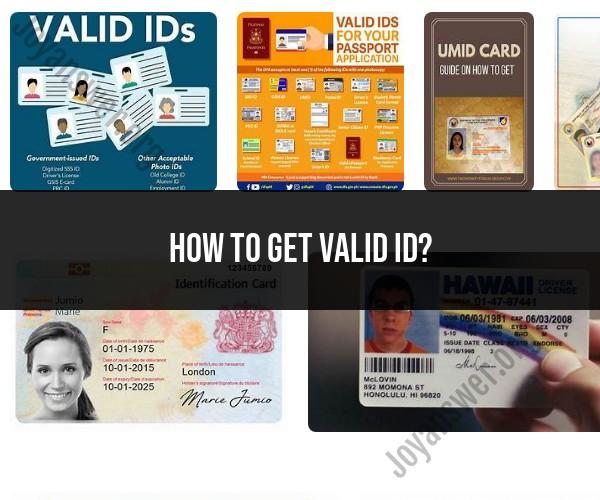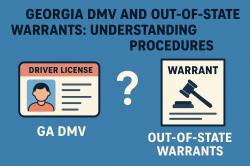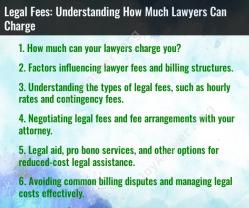How to get valid ID?
Obtaining a valid ID typically involves several steps, and the specific requirements and application process can vary depending on the type of ID you need (e.g., driver's license, state ID, passport) and the country or state in which you reside. Here is a general guide on how to get a valid ID:
Determine the Type of ID You Need:
- Identify the specific type of ID you require. Common types of IDs include government-issued IDs, driver's licenses, state IDs, and passports.
Check Eligibility and Requirements:
- Research the eligibility criteria and requirements for obtaining the ID. Requirements often include proof of identity, proof of residency, and, in some cases, proof of citizenship or legal status. Check with the relevant issuing authority to understand what is needed.
Gather Required Documents:
- Collect the necessary documents based on the requirements for the ID you're applying for. Common documents may include:
- Proof of identity (e.g., birth certificate, passport, social security card).
- Proof of residency (e.g., utility bills, lease agreements).
- Proof of legal status or citizenship (if applicable).
- Any additional documents specified by the issuing authority.
- Collect the necessary documents based on the requirements for the ID you're applying for. Common documents may include:
Visit the Issuing Authority:
- Go to the local office or agency responsible for issuing the type of ID you need. This could be a Department of Motor Vehicles (DMV) for driver's licenses or state IDs, a passport office for passports, or a government ID office for other government-issued IDs.
Complete the Application:
- Obtain an application form for the ID, and fill it out accurately and completely. Be sure to provide all necessary information and attach any required documents.
Pay Fees:
- Pay any applicable fees associated with obtaining the ID. Fees can vary widely depending on the type of ID and your location. Check with the issuing authority for fee details.
Provide Biometric Data (if applicable):
- Depending on the type of ID, you may need to provide biometric data such as fingerprints or a photograph. Follow the instructions provided by the issuing authority.
Submit Your Application:
- Submit your completed application, along with all required documents and fees, to the issuing authority. You may need to schedule an appointment or wait in line at the office.
Verification and Processing:
- The issuing authority will verify your documents and process your application. This may take some time, so be prepared for a potential wait.
Receive Your ID:
- Once your application is approved and processed, you will be issued the ID. Some IDs may be provided immediately (e.g., state IDs), while others (e.g., passports) may be mailed to you.
Store Your ID Securely:
- Safeguard your ID card by keeping it in a secure place. IDs are important documents for identification purposes, so it's crucial to prevent loss or theft.
It's important to note that the specific steps and requirements can vary by country, state, or jurisdiction. Always consult the official website or contact the relevant government agency for the most accurate and up-to-date information on obtaining a valid ID in your area.
Obtaining a Valid ID: Step-by-Step Guide and Requirements
To obtain a valid ID, you will need to meet certain requirements and follow a specific process. The requirements and process may vary depending on the type of ID you are applying for and the state or country in which you live. However, there are some general steps that are common to most ID applications:
- Gather the necessary documentation. This may include things like your birth certificate, Social Security card, passport photo, and proof of residency. You can find a list of the required documentation for your specific type of ID on the website of the government agency issuing it.
- Fill out an application form. This form will typically ask for your personal information, such as your name, address, and date of birth. You may also need to provide proof of residency and/or citizenship.
- Pay an application fee. The fee varies depending on the type of ID and the government agency issuing it.
- Have your photo and fingerprints taken. This is required for most government-issued IDs.
- Submit your application and documentation. You can usually submit your application and documentation in person at a government office or by mail.
- Wait for your ID to be issued. The processing time can vary depending on the type of ID and the government agency issuing it.
The Process of Getting a Legally Recognized Identification Card
The most common types of legally recognized IDs are government-issued IDs, such as driver's licenses, passports, and state IDs. To obtain a government-issued ID, you must meet the residency and citizenship requirements of the state or country in which you are applying. You must also be of legal age to apply.
The application process for a government-issued ID typically involves completing an application form, providing supporting documentation, paying an application fee, and having your photo and fingerprints taken. Once your application has been processed and approved, you will be issued your ID card.
Navigating ID Application: Tips for Ensuring Validity
When applying for an ID, it is important to follow the instructions carefully and to provide all of the required documentation. It is also important to be aware of the signs of a fraudulent ID. A fraudulent ID may have misspelled words or grammatical errors, or it may have been altered in some way. If you are unsure whether an ID is valid, you should contact the government agency that issued it.
Here are some additional tips for ensuring the validity of your ID:
- Keep your ID safe and secure. Do not carry your ID with you unless you need it, and keep it in a secure location when you do need to carry it.
- Report a lost or stolen ID immediately to the government agency that issued it.
- Update your ID when you change your name or address.
- Be aware of the signs of a fraudulent ID. If you are unsure whether an ID is valid, you should contact the government agency that issued it.
By following these tips, you can help to ensure the validity of your ID and protect yourself from identity theft.












